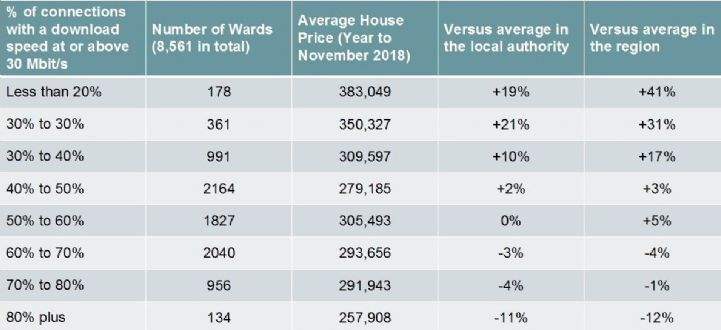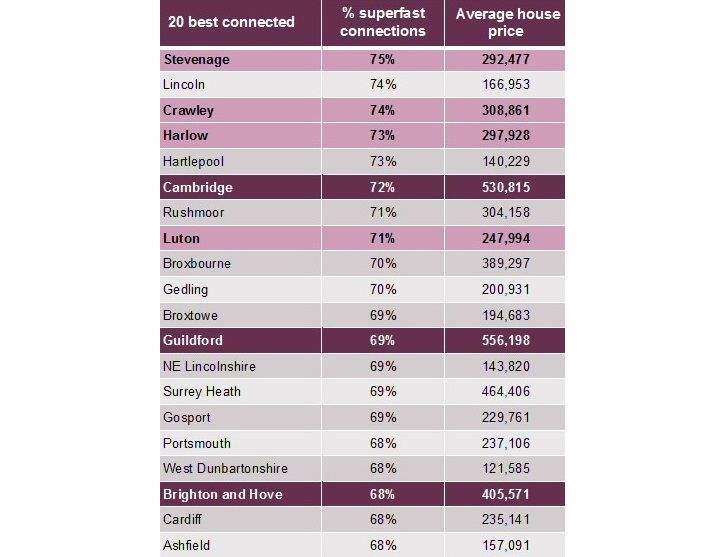Whether in search of information or diversion, access to the internet impacts countless aspects of modern life. But does it affect house prices too? How far has it come in terms of influencing where we live and how much we’re prepared to pay?
Given the internet’s pivotal role in so many day-to-day activities, the results of our recent research are perhaps surprising. Rather than areas with superfast broadband equating to high house prices, the reverse appears to be true.
Of the 8,651 electoral wards across Britain, there are only 448 where fewer than two-thirds of homes can access superfast broadband. House prices in these wards average £372,577, giving them an average 28 per cent premium over the local authority in which they sit and a 38 per cent premium compared to their regional average.
At the other end of the spectrum, in the 5,505 wards where between 98 and 100 per cent of homes can access superfast broadband, average house prices are just £269,524 – that’s below the £284,629 GB average*, -9 per cent below the local authority average and -11 per cent shy of their regional average.
Not everyone with possible access chooses to take advantage. Almost all (94 per cent) homes and businesses are located in areas where superfast broadband is now available, according to Ofcom, but fewer than half (45 per cent) of homes subscribe.
As the table below shows, a look at the relationship between those households and house prices confirms that values actually tend to be higher where the proportion of subscribers is lower.



.jpg)
.jpg)
.jpg)
.jpg)
.jpg)
.jpg)

.jpg)
.jpg)
.jpg)